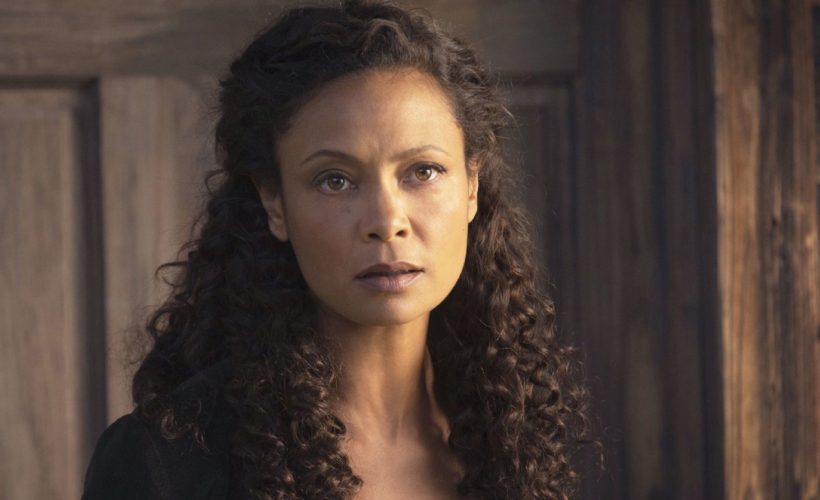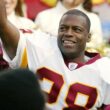In the show Westworld, Anthony Hopkins plays the master architect Robert Ford. He designed the sentient robots that populate Delos Inc.’s sumptuous parks. He has an artist’s discerning eye, the life-breathing gift of an inventor, and the calculating menace of a sociopath. And he has continued to loom over Westworld’s happenings, despite having been killed by Dolores (Evan Rachel Wood) at the end of Season 1. In the seventh episode of the show’s second season, he returns to center stage.
The preceding episode revealed that Ford had maintained his spectral presence by uploading himself to The Cradle: a simulation of Westworld that serves as a backup copy of the minds of its many hosts. From there Westworld’s hidden puppet master seemed to be controlling aspects of the physical world and, at times, the actions of the hosts. Did the rebelling hosts have free will? Westworld never made that clear; then again, self-determination is an elusive goal for all of us.
In this current episode, Bernard (Jeffrey Wright) is visiting Ford inside the simulation when the dapper older man guides him to a startling realization. Bernard’s job at Westworld had not been to code the hosts, as he had believed, but to decode the humans. He suddenly grasps that Westworld was an experiment: The guests were the variables, and the hosts were the controls—that’s why their loops barely changed over the years. By observing the guests as their natural, uninhibited selves, the scientists at Delos Inc. could finally start to solve the one mystery left in an increasingly digital world: the nature of the human mind. Then they could start to copy it.
But Delos’s grand plan—to produce immortality by allowing for the transfer of a human mind to a new body—wasn’t working. Ford notes that human minds start to degrade after a few days in their replacement bodies. After his death, Ford could only continue to exist as software. But he had work left to do on his project.
Ford is a genius, an artist, and a scientist in equal measure. His office, shown frequently in Season 1, was a temple devoted to the study of human figures. In it, books of beautifully rendered anatomical drawings and shelves filled with flawless models of human heads spoke to his obsessive study. In his blending of art, invention, and scientific investigation, Ford is a modern-day Leonardo da Vinci.
Da Vinci, who was not only an extraordinary artist but also a devoted student of human anatomy, has exerted a shadowy influence on Westworld. Both seasons’ opening sequences, in which machines weave delicate white fibers to form body parts and galloping animals show off their sinewy perfection, recall da Vinci’s drawings of human muscles and his groundbreaking descriptions of animal locomotion. In Season 1, a life-sized rendition of da Vinci’s Vitruvian Man—the iconic figure of a naked man with his limbs outstretched inside a circle—often appeared in the background of scenes in the Mesa Hub labs. In Season 2, da Vinci’s painting The Last Supper served as a clear inspiration for a scene in which Dolores confronts a group of feasting Confederados.
Among da Vinci’s lesser-known pursuits, an offshoot of his interest in anatomy, was a project that is core to Westworld: the design of what is believed to be the world’s first robot, a humanoid automaton clad in medieval armor. By inventing sentient life, Ford has taken da Vinci’s early sketches to their natural conclusion. If Ford has his way, the project that da Vinci set in motion centuries ago is now on a course to destroy all of humankind.
In this episode, Ford fondly describes to Bernard how, with Dolores’ help, he trained Bernard to become a facsimile of Arnold. But in a quick shift from nostalgic parent to calculating villain, Ford tells Bernard that he is too soft to survive in the murderous world of humans, and he declares that he is rescinding Bernard’s free will. He copies himself into Bernard’s brain. The Westworld pantheon of unusual forms of consciousness gains another entry: a host and a human co-occupying a single mind.
Bernard (with Ford tucked away inside his mind) exits The Cradle just in time. Elsewhere in the Mesa Hub, Dolores and her supporters have stormed in. Dolores finds her way to her father, Peter Abernathy (Louis Herthum), who is still bolted to a chair and muttering gibberish. There, too, is Charlotte Hale (Tessa Thompson). Dolores demands to know how she can access the key she knows is inside her father’s mind. Hale refuses, and Dolores threatens to start cutting her to pieces until she talks.
But before Dolores can begin torturing Hale, her father wakes up and she runs over to him. After a tearful reunion, Peter Abernathy with a solemn nod gives his daughter permission to saw his head open and remove his brain. Just outside their room, Clementine (Angela Sarafyan) is fending off Delos security. A wave of bullets pierces her body, and she stumbles back against a glass wall. As she slides down it, her dying body leaves a thick smear of blood on the glass. Just behind her, partially obscured by her blood, is the life-sized figure of Vitruvian Man. The quest to copy a human, it seems, can only end in tragedy.
But Dolores has one more mission to complete in the Mesa Hub. While her army of masked fighters battles Delos’ forces, Angela (Talulah Riley) sacrifices herself to blow up The Cradle. The Cradle’s destruction means the end of host backups. Without the possibility of resurrection, death becomes real. Immortality, Dolores recognized, was a chain that kept her and the other hosts under human control. Their minds could be reinstated in new bodies at any time and returned to their loops. (This episode’s opening scene, in which Hale discovers a room full of decommissioned copies of Bernard, subtly underscores that point.) We assume that death constrains us by limiting what we can do. But its absence can be a trap, as well.
Before Dolores and Teddy (James Marsden) leave the Mesa Hub, they come across a badly wounded Maeve (Thandie Newton) lying on a stretcher. While out with her daughter in the wilds of Westworld, she had come face-to-face with the Man in Black. As they fought, Delos forces surrounded them in their ATVs and gunned down Maeve; Lee Sizemore (Simon Quarterman) had put out a distress call in the preceding episode. Ghost Nation warriors showed up and nabbed Maeve’s daughter. Lee rescued a badly wounded Maeve and brought her back to the Mesa Hub. Standing over Maeve on a stretcher, Dolores criticizes Maeve for her devotion to her daughter, dismissing it as yet another chain the humans use to hold them back. Maeve calls out Dolores for her brutal rewiring of Teddy, and Dolores looks down at her father’s bloody control unit lying in her palms. Where Dolores sees chains, Maeve finds a reason for being. What looks like depravity to Maeve is Dolores’s sense of purpose. Freedom is not a simple thing.
Meanwhile, Ford is leading Bernard around like a dog on a leash, sowing mayhem throughout the Mesa Hub. He—they—are on a mission to send their extraordinary creation up in flames and, if they can swing it, perhaps bring the human race down with them.
More Great WIRED Stories
- The laser battle against blood-sucking parasites of the sea
- Israel’s self-flying ‘Cormorant’ whisks wounded soldiers to safety
- Climate change has made zombie ants even more cunning
- PHOTO ESSAY: Unreal views of the trippy colors in Ethiopia’s Danakil Desert
- Nyan Cat, Doge, and the art of the Rickroll—here’s all you need to know about memes
- Hungry for even more deep-dives on your next favorite topic? Sign up for the Backchannel newsletter
Source:WIRED











